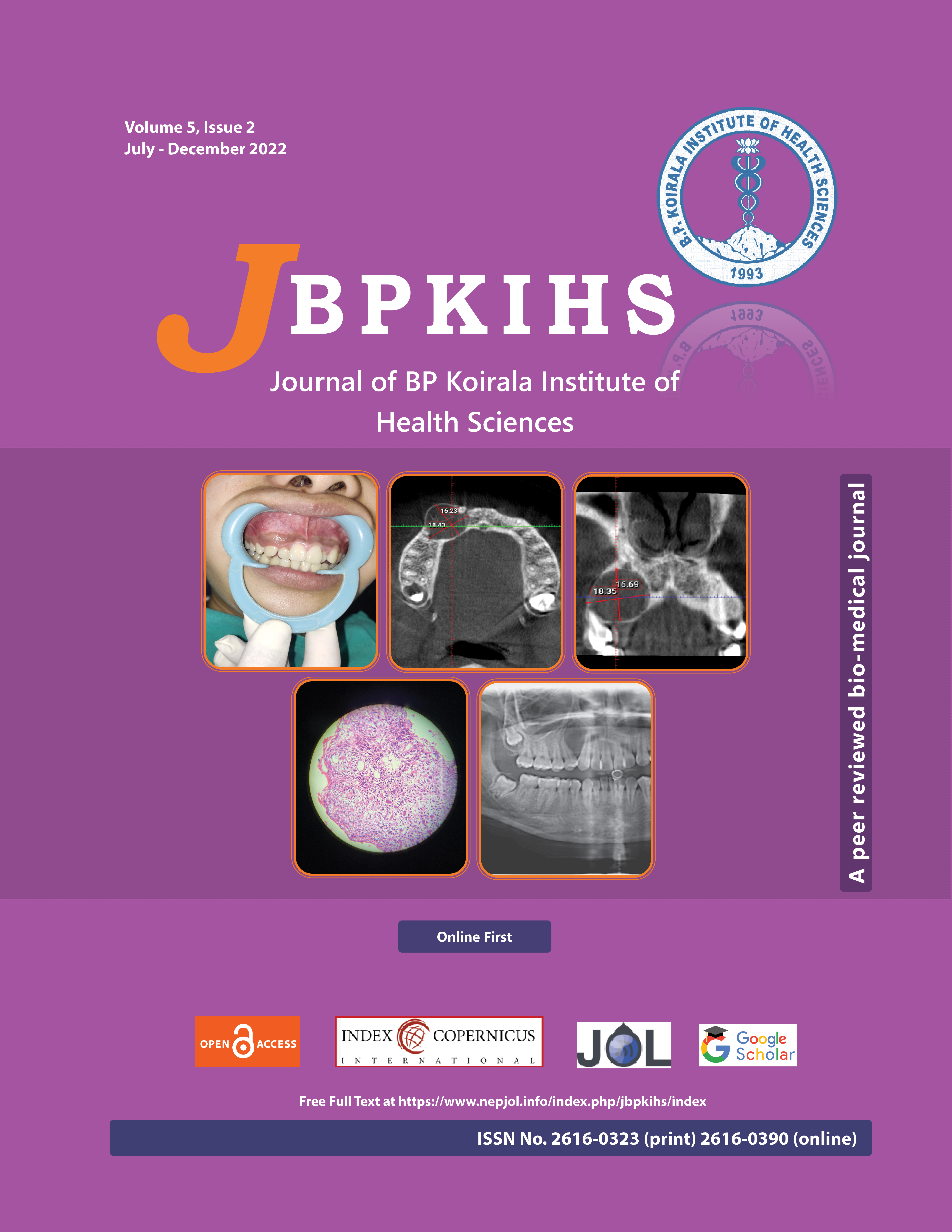Pattern of Pediatric Maxillofacial Injuries at a University Hospital of Eastern Nepal
DOI:
https://doi.org/10.3126/jbpkihs.v5i2.50530Keywords:
Facial injuries, Jaw fractures, Maxillofacial injuries, Pediatric dentistryAbstract
Background: Although facial injuries are far more uncommon than other injuries, they pose a great challenge. We aimed to evaluate the demographic distribution and pattern of maxillofacial injuries (MFIs) among pediatric patients in Eastern Nepal.
Methods: This cross-sectional study was conducted in the university hospital of B. P. Koirala Institute of Health Sciences, a tertiary care center in Eastern Nepal. All consecutive patients less than 15 years of age who visited the out- patient unit of the maxillofacial surgery department, or pediatric emergency service of the hospital from 1 September 2018 to 31 August 2019 and had MFIs were enrolled. Demographic characteristics of the patients, mechanism of injury, time to presentation, type of facial injury and any other associated injuries were recorded.
Results: Thirty-six patients (12 girls and 24 boys) with an age (median (IQR)) of 4 (1.7 to 8.75) years presented to the hospital with a history of pediatric MFI. The delay in hospital presentation (median (IQR)) was 3.5 (1.6 – 6.3) h. Falls at home (69.4%) and road traffic accidents (27%) were the most common causes of trauma. Isolated MFI was present in 72.2% of the patients. Isolated soft tissue injury (55.6%) was the most common type of MFIs followed by the combination of hard and soft tissue injuries (36.1%).
Conclusion: Pediatric MFIs are not uncommon. Falls at home and RTAs are the most common causes of MFIs in children below the age of five years.
Downloads
Downloads
Published
How to Cite
Issue
Section
License
Copyright (c) 2022 Journal of BP Koirala Institute of Health Sciences

This work is licensed under a Creative Commons Attribution-NonCommercial-NoDerivatives 4.0 International License.
This license enables reusers to copy and distribute the material in any medium or format in unadapted form only, for noncommercial purposes only, and only so long as attribution is given to the creator.




